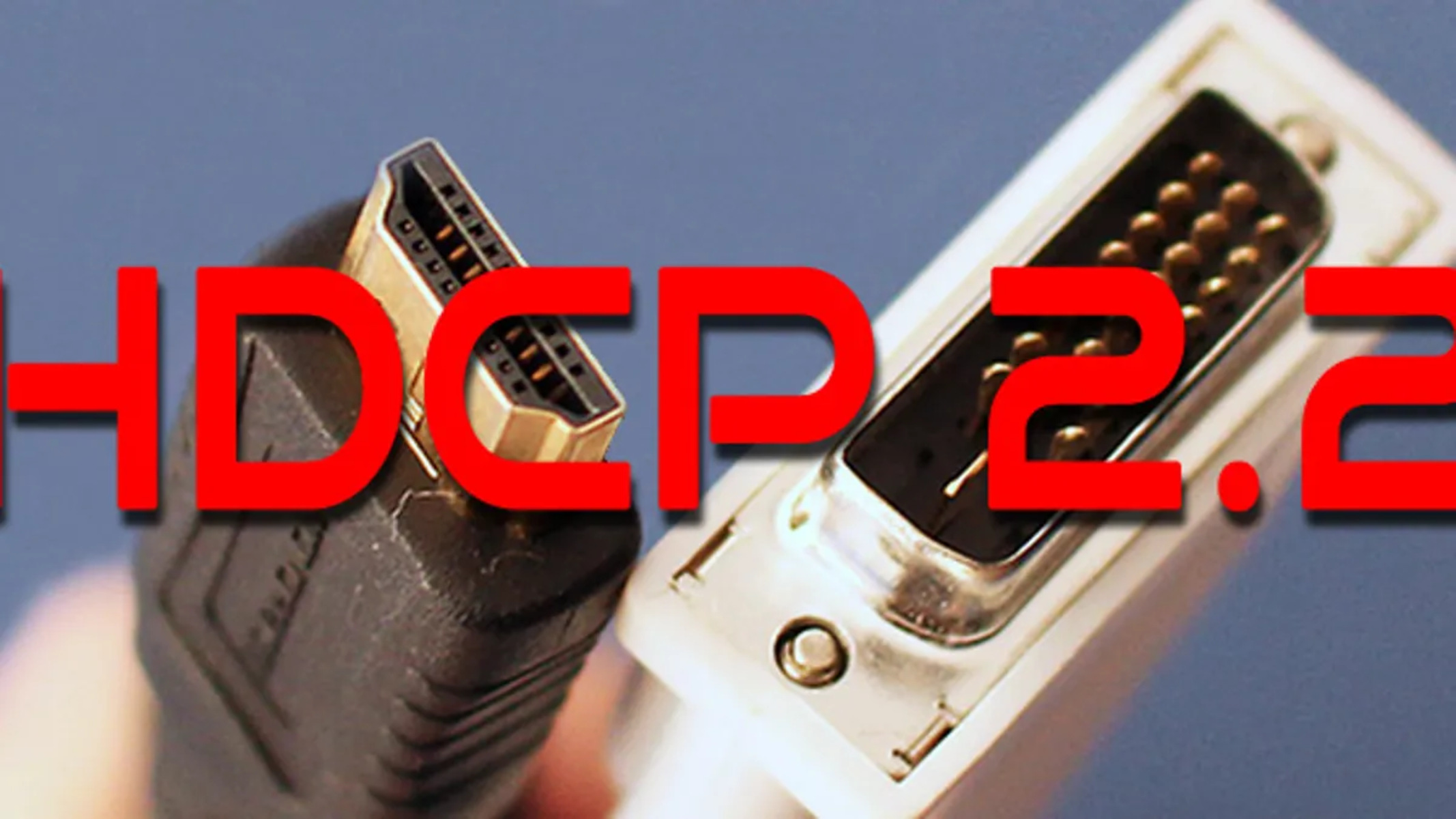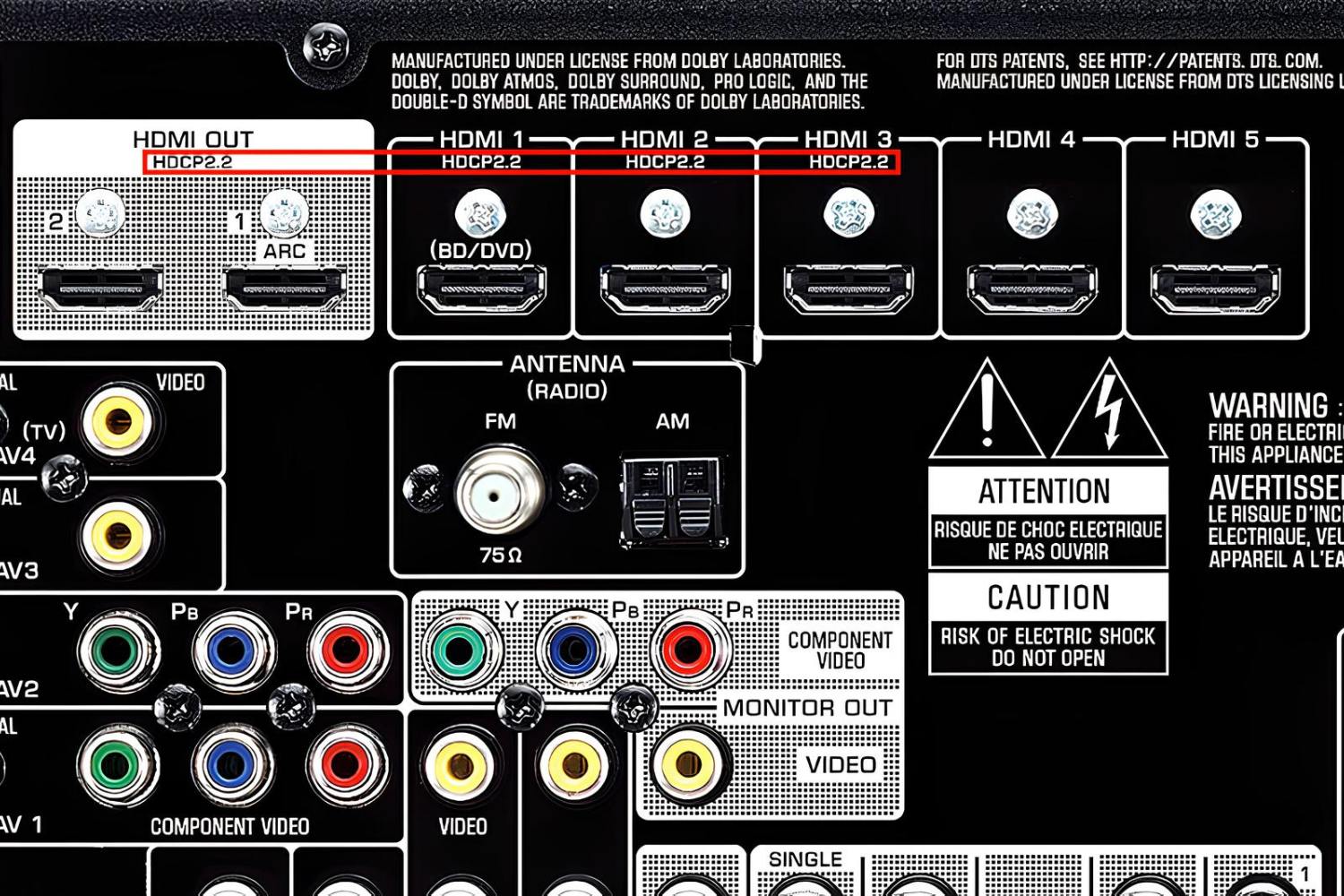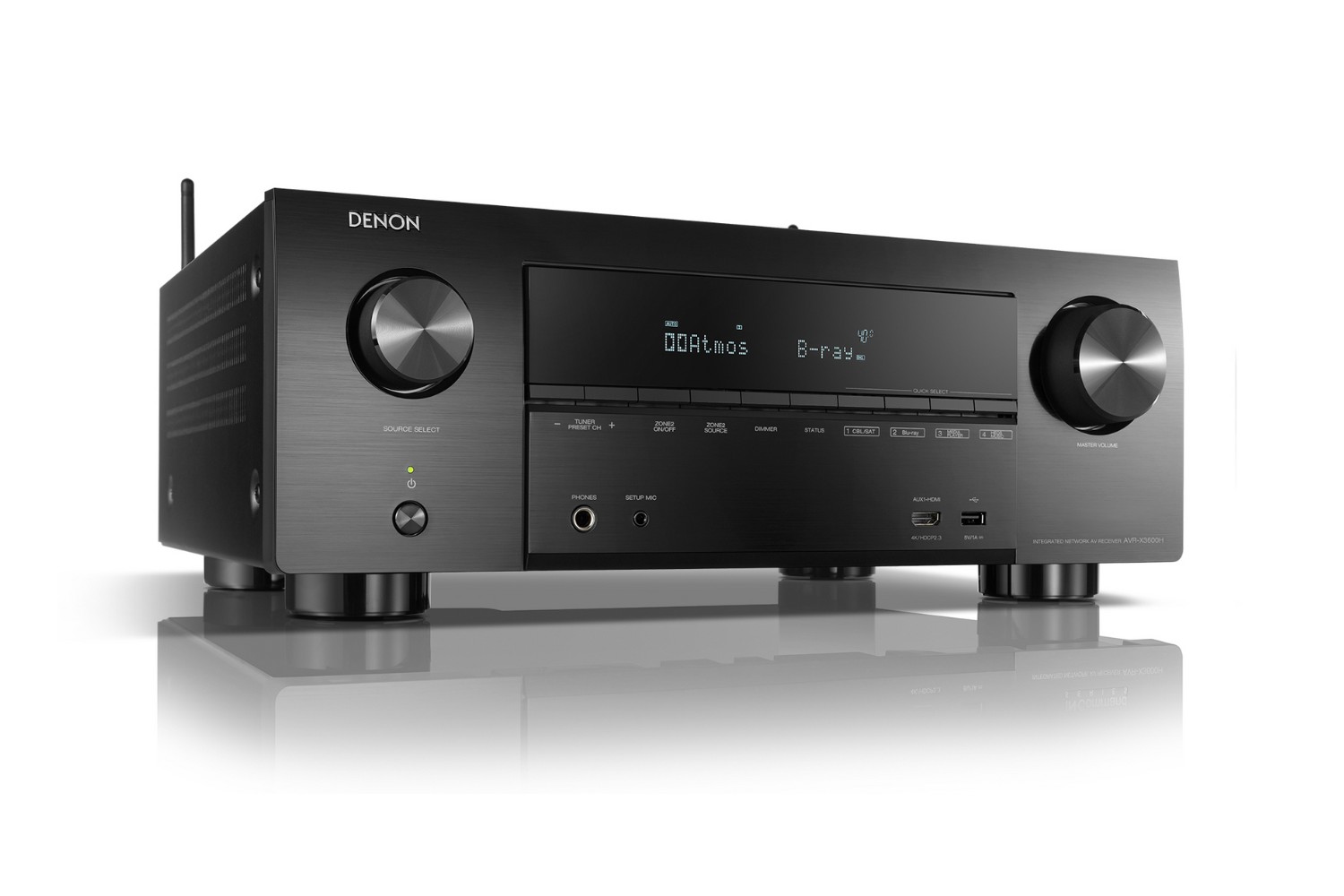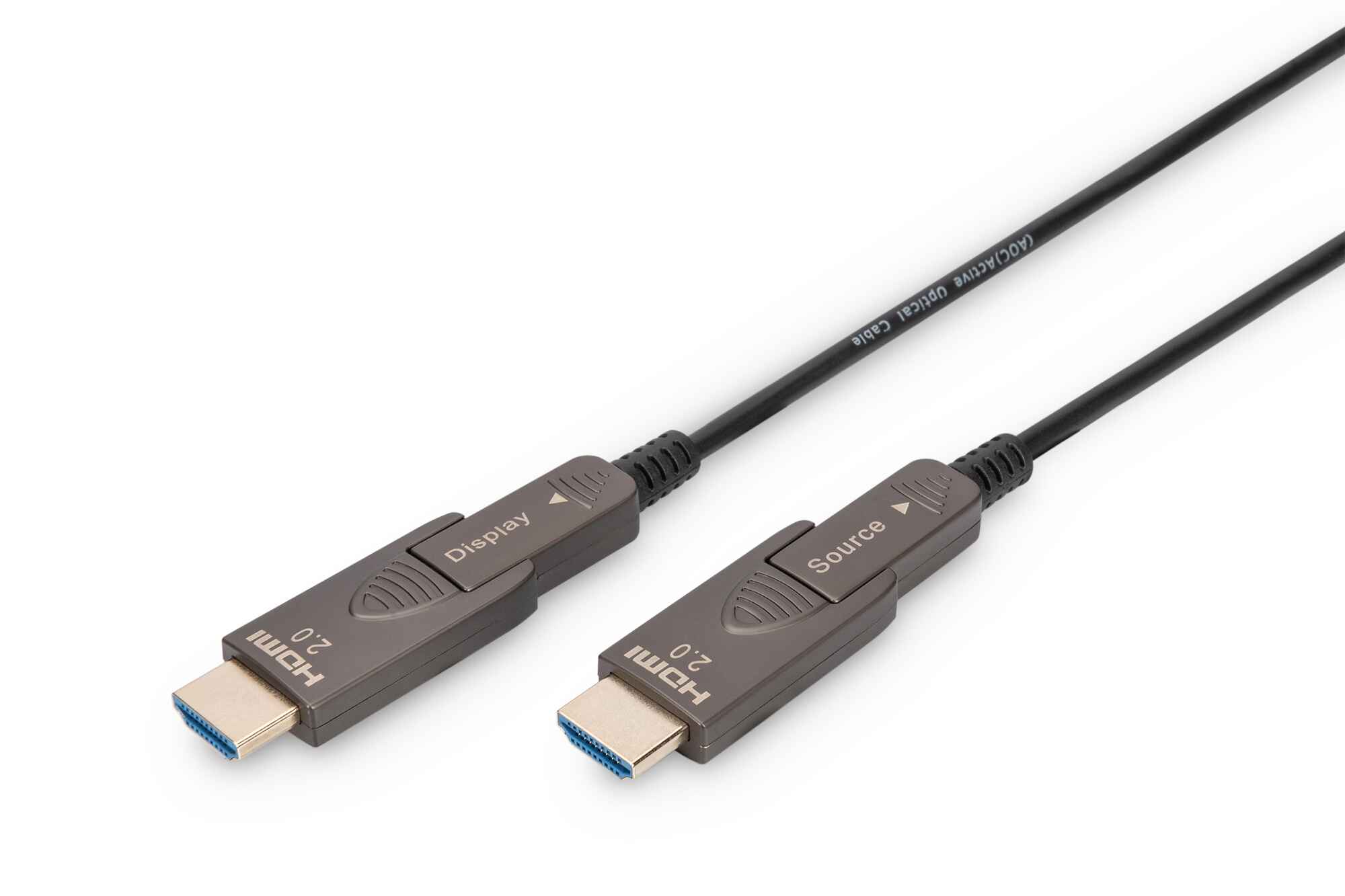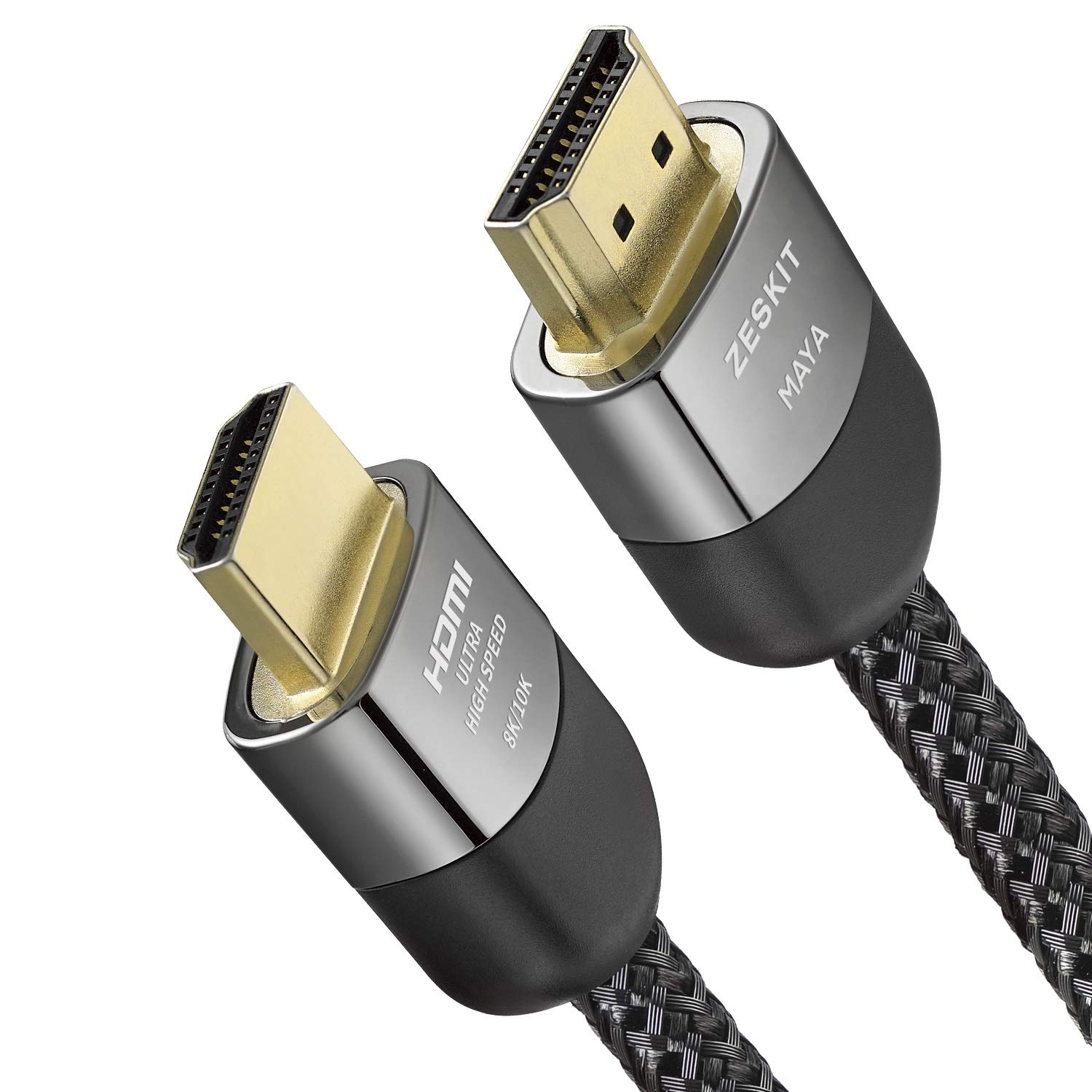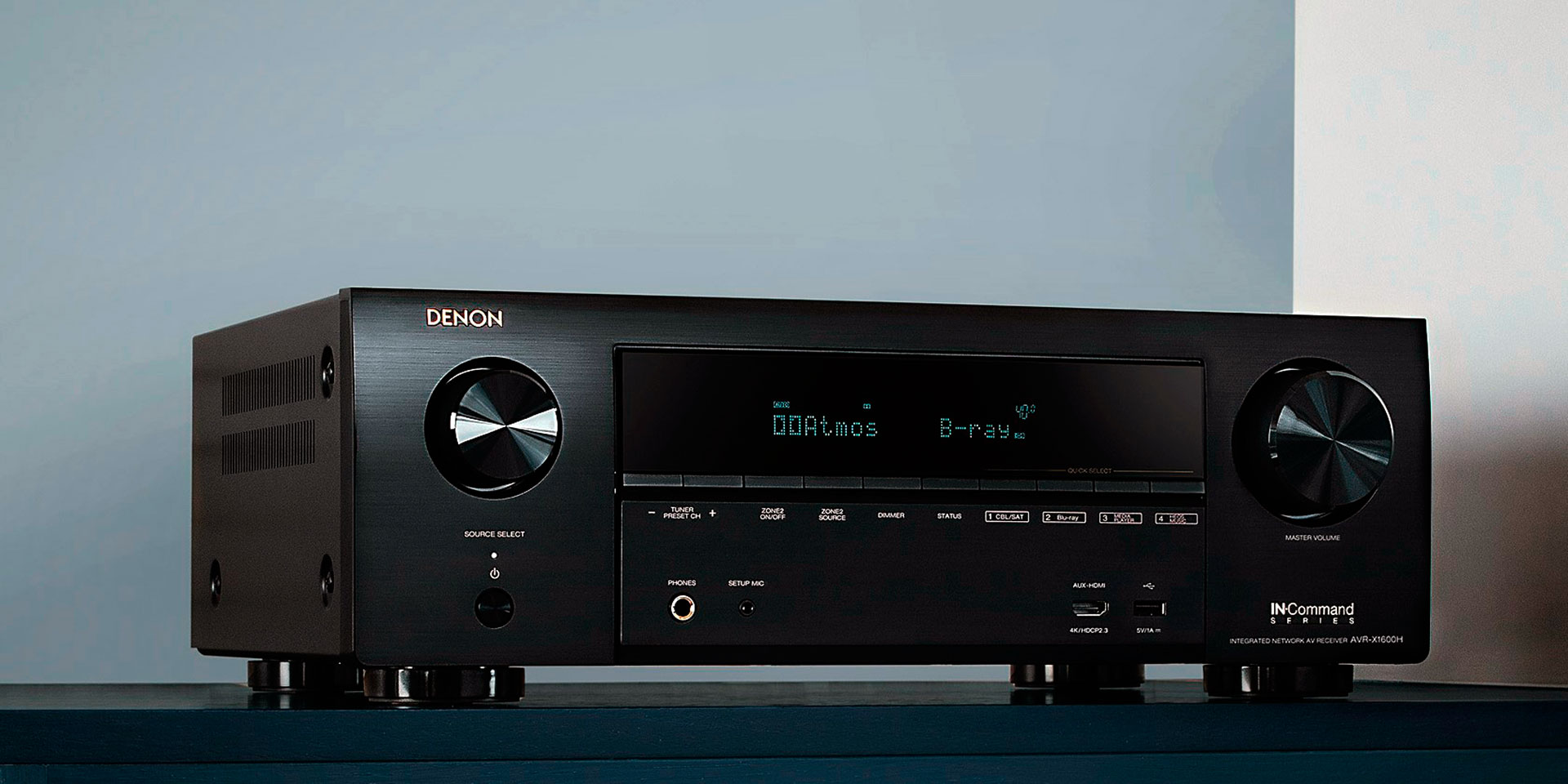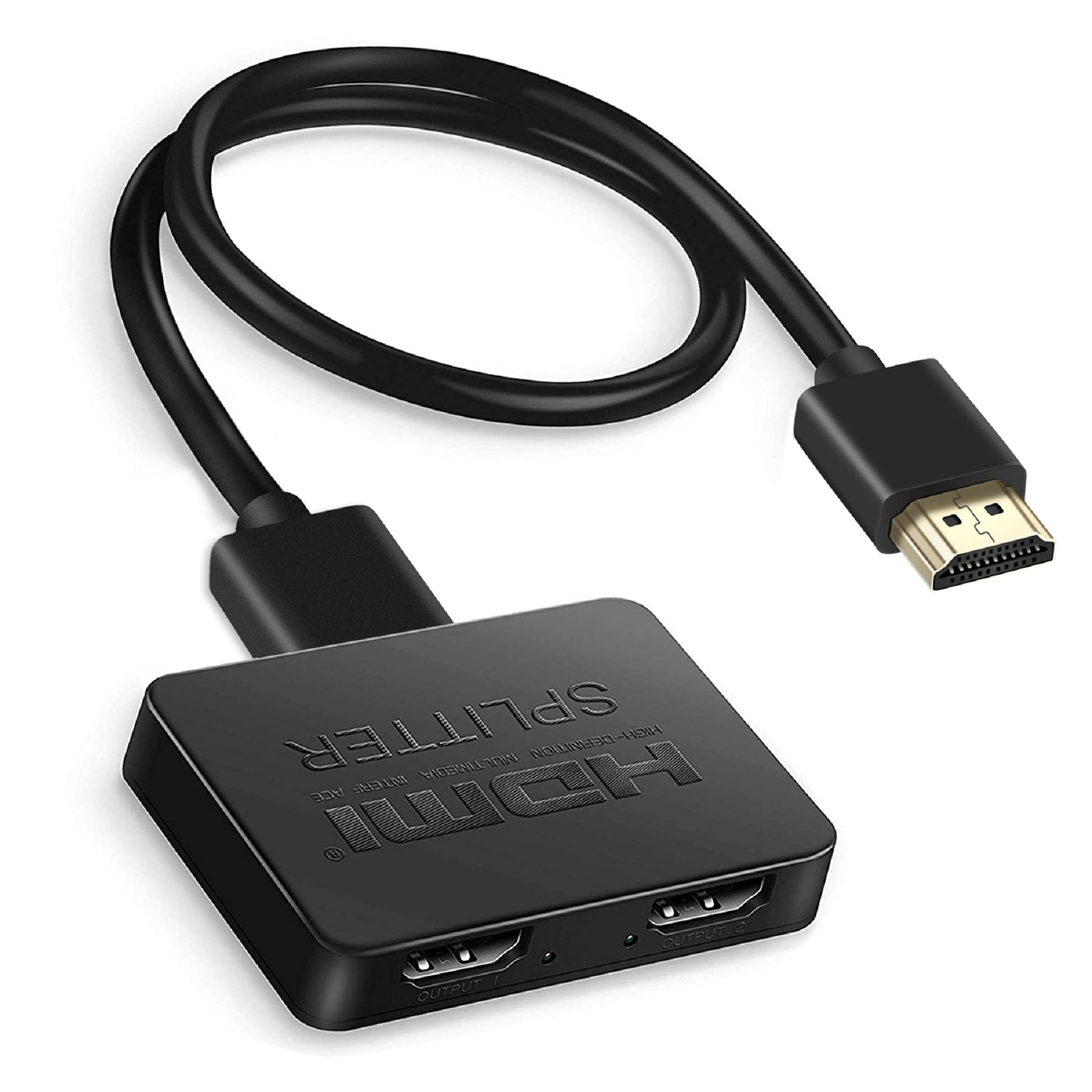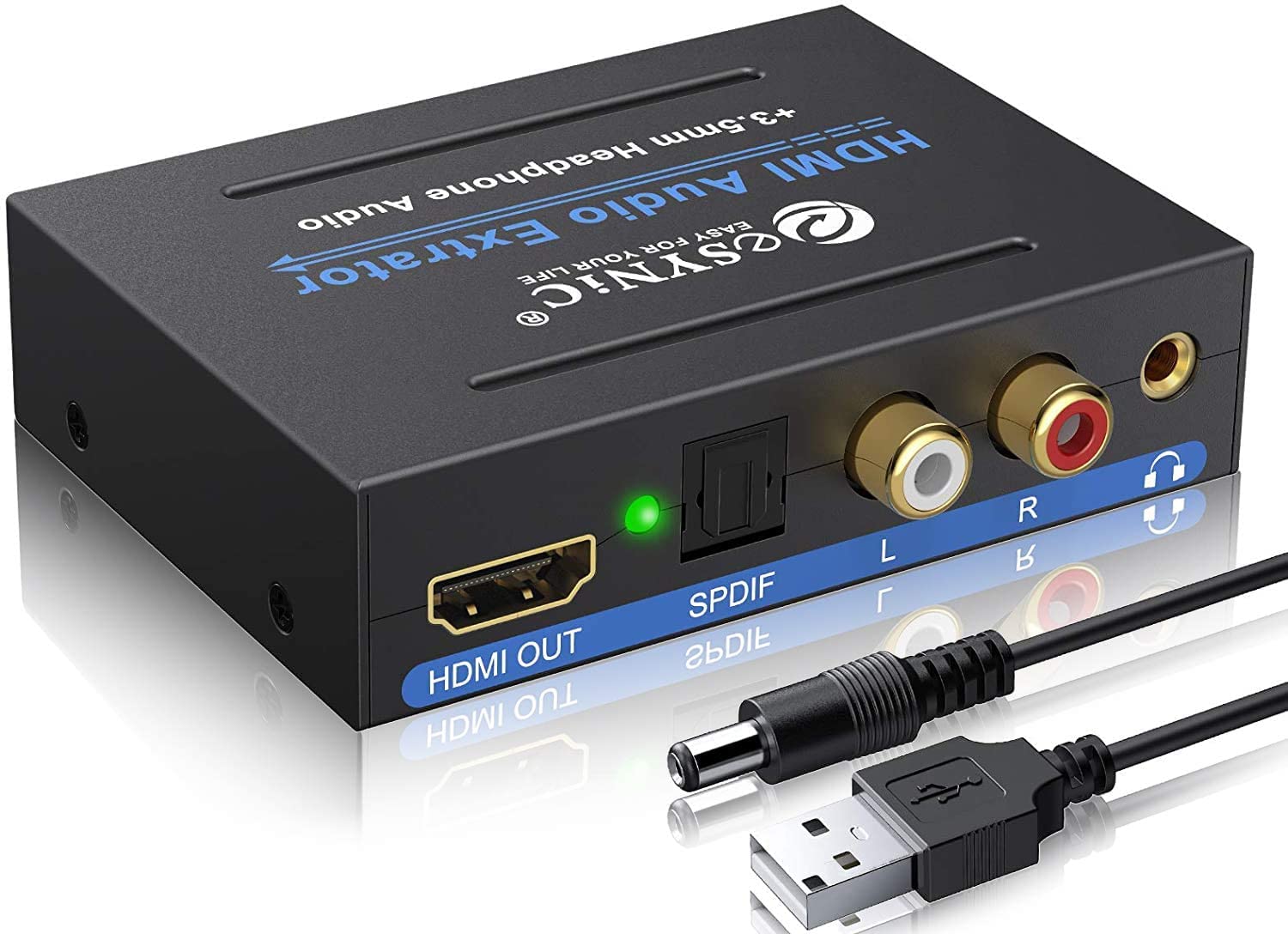Introduction
Welcome to the world of HDMI HDCP 2.2! If you’ve ever wondered about the underlying technology that enables your high-definition entertainment system to function seamlessly, you’ve come to the right place. In this article, we will explore the world of HDMI HDCP 2.2 and delve into its inner workings.
HDMI HDCP 2.2 is an integral component of modern entertainment systems, allowing for the secure transmission of high-definition audio and video content between devices. Whether you’re streaming your favorite movies and TV shows or playing video games with stunning visuals, HDCP 2.2 plays a vital role in ensuring that the content is protected and delivered in the best possible quality.
Throughout this article, we will explore what HDCP 2.2 is, how it works, its compatibility with various HDMI devices, the advantages it offers, and its limitations. So, strap in and let’s embark on this journey into the world of HDMI HDCP 2.2.
Before we dive into the technical aspects, it’s important to note that HDCP stands for High-bandwidth Digital Content Protection. It is a form of digital rights management (DRM) technology developed by Intel Corporation to prevent unauthorized copying or distribution of copyrighted content. HDCP 2.2 is the latest version of this technology, an upgraded and more robust solution compared to its predecessors.
As we continue, we’ll unravel the intricate details of HDCP 2.2, uncover its purpose, explore its compatibility with HDMI devices, and discuss its advantages and limitations. By the end of this journey, you will have a comprehensive understanding of HDMI HDCP 2.2 and its significance in the world of high-definition entertainment.
What is HDMI HDCP 2.2?
HDMI HDCP 2.2 is a digital copyright protection technology that ensures secure transmission of high-definition audio and video content between HDMI devices. HDCP, short for High-bandwidth Digital Content Protection, was developed to prevent unauthorized copying and distribution of copyrighted material.
HDCP 2.2 is the latest version of this technology, improved to offer even stronger protection for 4K Ultra HD content. It is specifically designed to cater to the requirements of the latest generation of 4K-capable devices, such as Blu-ray players, game consoles, streaming devices, and televisions. HDCP 2.2 establishes a secure encrypted connection between the source device (such as a Blu-ray player) and the display device (such as a 4K TV), ensuring that the content is protected from unauthorized interception or duplication.
In a nutshell, HDCP 2.2 is a vital component for any 4K entertainment system, as it enables the secure transmission of copyrighted content at its highest quality. Without HDCP 2.2, the content would be downgraded to a lower resolution, limiting the viewer’s experience and defeating the purpose of owning a 4K device.
One important thing to note is that HDCP 2.2 is backward compatible, meaning it can work with devices that support earlier versions of HDCP. However, for the best 4K experience, it is recommended to have both the source and display devices equipped with HDCP 2.2 to ensure uninterrupted content transmission at the highest quality.
Now that we have an understanding of what HDCP 2.2 is and its purpose, let’s dive deeper into how it works and the mechanisms behind its secure content transmission.
How does HDCP 2.2 work?
HDCP 2.2 works by establishing a secure connection between the source device (e.g., a Blu-ray player) and the display device (e.g., a 4K TV), ensuring that the transmitted content remains protected and can only be viewed on authorized devices. It achieves this through a combination of encryption, authentication, and key exchange protocols.
When a source device and display device are connected via HDMI, they perform a handshake to establish a secure connection using HDCP 2.2. During this handshake, the devices verify each other’s identity and exchange encryption keys necessary for the secure transmission of content. The HDCP 2.2 authentication process ensures that both the source and display devices are HDCP 2.2 compliant and authorized to transmit and receive 4K content.
Once the handshake is complete, HDCP 2.2 encrypts the audio and video signals transmitted over the HDMI cable. This encryption prevents unauthorized interception or recording of the content as it travels from the source device to the display device. Only authorized devices with the proper encryption keys can decrypt and display the content, ensuring that it remains protected from piracy.
HDCP 2.2 also incorporates key revocation functionality. This means that if a particular device or encryption key is found to be compromised or unauthorized, it can be revoked by the HDCP Licensing Authority, rendering it ineffective for future content transmission. By regularly updating and revoking compromised keys, HDCP 2.2 ensures the continued security and integrity of the content transmission.
It’s important to note that HDCP 2.2 works seamlessly in the background, without any user intervention or noticeable impact on the viewing experience. Once the handshake and authentication process are complete, the content is transmitted from the source device to the display device in high-definition, securely encrypted form. The end result is a crisp, high-quality viewing experience on your 4K display.
Now that we understand how HDCP 2.2 works, let’s explore the purpose it serves in the realm of high-definition entertainment.
Purpose of HDCP 2.2
The primary purpose of HDCP 2.2 is to protect copyrighted content from unauthorized copying, distribution, and piracy in the evolving landscape of high-definition entertainment. With the increasing availability of 4K Ultra HD content and the rise of advanced streaming platforms, it has become crucial to implement robust content protection measures.
HDCP 2.2 ensures that only authorized devices can decrypt and display high-quality 4K content, providing a secure ecosystem for content creators, distributors, and consumers. By establishing a trusted and encrypted pathway between the source and display devices, HDCP 2.2 safeguards the investment made by content creators and copyright holders, encourages the creation of more premium content, and maintains the integrity of the content distribution chain.
One of the main purposes of HDCP 2.2 is to combat piracy. It prevents illegal duplication of high-definition content by encrypting the audio and video signals during transmission. This encryption, coupled with the authentication and key exchange protocols, ensures that only authorized devices can access and display the content. As a result, HDCP 2.2 acts as a deterrent for piracy and helps protect the revenue generated by premium content.
Furthermore, HDCP 2.2 serves to provide consumers with a seamless and immersive 4K viewing experience. By implementing secure content transmission, HDCP 2.2 ensures that the content is displayed at its highest quality, without any degradation caused by unauthorized copying or tampering. This allows viewers to fully enjoy the rich details, vibrant colors, and exceptional clarity that 4K Ultra HD content offers.
HDCP 2.2 also plays a crucial role in maintaining compatibility between HDMI devices. With the rapid advancement of technology, it is necessary to ensure that all devices in the content transmission chain are HDCP 2.2 compliant. This compatibility ensures that users can seamlessly connect and enjoy high-definition content across a wide range of devices, from Blu-ray players to game consoles, streaming devices to 4K TVs.
In summary, the purpose of HDCP 2.2 is to protect copyrighted content, combat piracy, deliver a premium viewing experience, and foster compatibility among HDMI devices. By implementing robust encryption, authentication, and key exchange mechanisms, HDCP 2.2 establishes a secure ecosystem where content creators, distributors, and consumers can thrive in the world of high-definition entertainment.
Compatibility with HDMI devices
One of the key considerations when implementing HDCP 2.2 is its compatibility with various HDMI devices. As HDCP 2.2 is a relatively new technology, not all devices in the market may support it. Let’s explore the compatibility aspect in more detail.
HDCP 2.2 is backward compatible with earlier versions of HDCP, such as HDCP 1.4 and HDCP 2.0. This means that if a source device supports HDCP 2.2 but is connected to a display device that only supports HDCP 1.4 or HDCP 2.0, the content will still be displayed. However, it’s important to note that the content may be downscaled to a lower resolution to comply with the restrictions of the lowest HDCP version supported by the devices.
For example, if a 4K Blu-ray player with HDCP 2.2 is connected to a 1080p TV with HDCP 1.4, the 4K content will be downscaled to 1080p to ensure compatibility. This highlights the importance of having both the source and display devices equipped with HDCP 2.2 to fully enjoy the benefits of 4K Ultra HD content.
When purchasing new HDMI devices, it’s essential to ensure that they are HDCP 2.2 compliant. This applies not only to TVs but also to devices such as Blu-ray players, AV receivers, soundbars, gaming consoles, and streaming devices. Checking the specifications and looking for the HDCP 2.2 logo or mention of HDCP 2.2 compatibility will help guarantee that the device supports the secure transmission of 4K content.
It is worth noting that HDCP 2.2 compliance is not limited to physical devices alone. Content streaming platforms and services, such as Netflix, Amazon Prime Video, and Hulu, also need to support HDCP 2.2 in order to ensure the secure transmission of their 4K content. This means that both the device and the streaming service need to be compatible with HDCP 2.2 for a seamless 4K streaming experience.
To summarize, HDCP 2.2 compatibility is crucial for ensuring that all components of an entertainment system can securely transmit and display high-quality 4K content. It is advisable to check the device specifications and seek the HDCP 2.2 logo when purchasing new HDMI devices or subscribing to streaming services.
Advantages of HDCP 2.2
HDCP 2.2 offers several advantages that enhance the overall entertainment experience and ensure the protection of copyrighted 4K content. Let’s explore some of these advantages:
1. Secure Content Transmission: The primary advantage of HDCP 2.2 is its ability to securely transmit high-definition audio and video content. By implementing encryption, authentication, and key exchange protocols, HDCP 2.2 ensures that the content remains protected from unauthorized copying or distribution. This provides content creators, distributors, and consumers with the peace of mind that their investment in premium 4K content is safeguarded.
2. Enhanced Viewing Experience: HDCP 2.2 enables viewers to fully enjoy the stunning visuals and immersive details of 4K Ultra HD content. By establishing a secure pathway for the content, HDCP 2.2 ensures that the video signals are delivered at their highest quality without any loss or degradation. This allows for a crisp, vibrant, and lifelike viewing experience, bringing movies, TV shows, and games to life.
3. Compatibility with HDMI Devices: HDCP 2.2 ensures compatibility between HDMI devices, from source devices like Blu-ray players and game consoles to display devices like 4K TVs. This compatibility allows for seamless connectivity and content transmission across different devices, providing flexibility for users to create their personalized home entertainment systems.
4. Future-Proofing: As HDCP 2.2 is the latest version of the HDCP technology, it offers a future-proof solution for handling 4K content. By investing in HDCP 2.2 compliant devices, users can be confident that their entertainment system will be able to support upcoming advancements in content quality and transmission.
5. Deterrent for Piracy: HDCP 2.2 serves as a strong deterrent against content piracy. By encrypting the audio and video signals during transmission, HDCP 2.2 prevents unauthorized interception or recording of the content. This discourages individuals from engaging in illegal distribution and helps protect the revenue generated by content creators and copyright holders.
6. Industry Standard: HDCP 2.2 is widely accepted as the industry standard for protecting high-definition content. It is adopted by major content creators, distributors, and device manufacturers, ensuring a consistent and secure ecosystem for the transmission of 4K content.
In summary, HDCP 2.2 offers advantages such as secure content transmission, enhanced viewing experience, compatibility with HDMI devices, future-proofing capabilities, deterrence against piracy, and recognition as the industry standard. These advantages contribute to a seamless, protected, and immersive entertainment experience for consumers in the ever-evolving world of high-definition entertainment.
Limitations of HDCP 2.2
While HDCP 2.2 offers significant advantages in securing and delivering high-definition content, it does come with a few limitations. Let’s explore some of these limitations:
1. Limited Backward Compatibility: While HDCP 2.2 is backward compatible with earlier versions of HDCP, it is not compatible with devices that do not support HDCP at all. This means that older HDMI devices, such as older HDTVs or non-HDCP compliant monitors, may not be able to receive and display content transmitted with HDCP 2.2. It is important for users to ensure that all devices in their entertainment system are HDCP 2.2 compliant to avoid compatibility issues.
2. Compatibility Gaps: Due to the rapid evolution of technology, there may exist compatibility gaps between devices regarding HDCP 2.2. For example, some older 4K TVs may not support HDCP 2.2, even though they have a 4K resolution. This can create challenges when trying to connect and transmit HDCP 2.2 protected content to such devices. It is essential to research and confirm compatibility before making any purchasing decisions to ensure a seamless experience.
3. Content Limitations: While HDCP 2.2 ensures the secure transmission of copyrighted content, it cannot address certain limitations imposed by content providers. Some streaming services and content providers may place additional restrictions on the use of their content, such as limiting the number of devices that can access the content simultaneously or restricting the ability to record certain programs. These limitations are outside the scope of HDCP 2.2 and are specific to the content provider’s policies.
4. Performance Impact: While HDCP 2.2 operates seamlessly in the background, the encryption and decryption process can introduce a minimal amount of latency. This latency, although generally negligible, can potentially have a minor impact on real-time interactive applications, such as gaming. However, with advancements in technology and hardware optimizations, the impact is becoming less noticeable.
5. Key Revocation: HDCP 2.2 implements a mechanism for key revocation in case of compromised or unauthorized devices. While this is crucial for maintaining the security of the content transmission, it can also introduce complexities when attempting to use older or non-compliant devices that have been revoked by the HDCP Licensing Authority.
It is important to note that while HDCP 2.2 has limitations, they are necessary to ensure the security and protection of high-definition content. These limitations can be overcome by using HDCP 2.2 compliant devices and staying informed about the requirements and compatibility specifications of both the content and the devices involved.
In summary, HDCP 2.2 has limitations related to backward compatibility, compatibility gaps between devices, content restrictions imposed by providers, minor performance impact, and key revocation. These limitations should be taken into consideration when setting up an entertainment system to ensure a seamless and compliant experience with HDCP 2.2.
Conclusion
In conclusion, HDCP 2.2 plays a vital role in the world of high-definition entertainment by providing secure transmission of copyrighted 4K content. It ensures that only authorized devices can access and display the content, protecting the rights of content creators and distributors.
HDCP 2.2 offers several advantages, including secure content transmission, enhanced viewing experience, compatibility with HDMI devices, future-proofing capabilities, deterrence against piracy, and recognition as the industry standard. With HDCP 2.2, viewers can enjoy the stunning visuals and immersive details of 4K Ultra HD content without the fear of unauthorized copying or distribution.
While HDCP 2.2 has some limitations, such as limited backward compatibility and compatibility gaps between devices, these can be overcome by ensuring that all devices in the entertainment system are HDCP 2.2 compliant and conducting thorough research before making any purchasing decisions.
HDCP 2.2 is an evolving technology that adapts to the ever-changing landscape of high-definition entertainment. It provides peace of mind for content creators, distributors, and consumers, knowing that their investment in premium 4K content is protected.
As technology continues to advance and 4K content becomes more widespread, HDCP 2.2 will remain at the forefront of safeguarding high-definition content and contributing to a seamless, secure, and immersive entertainment experience.







